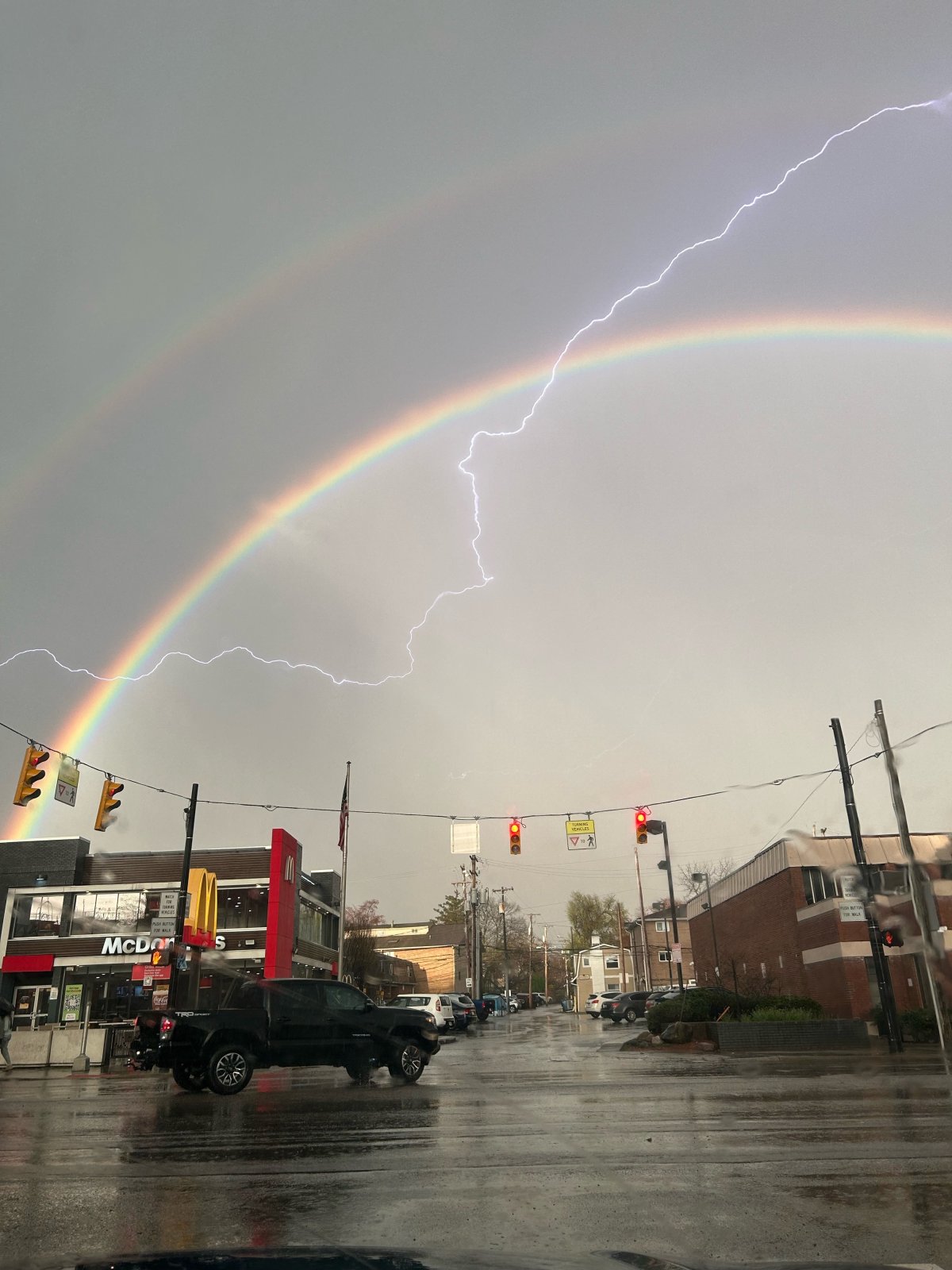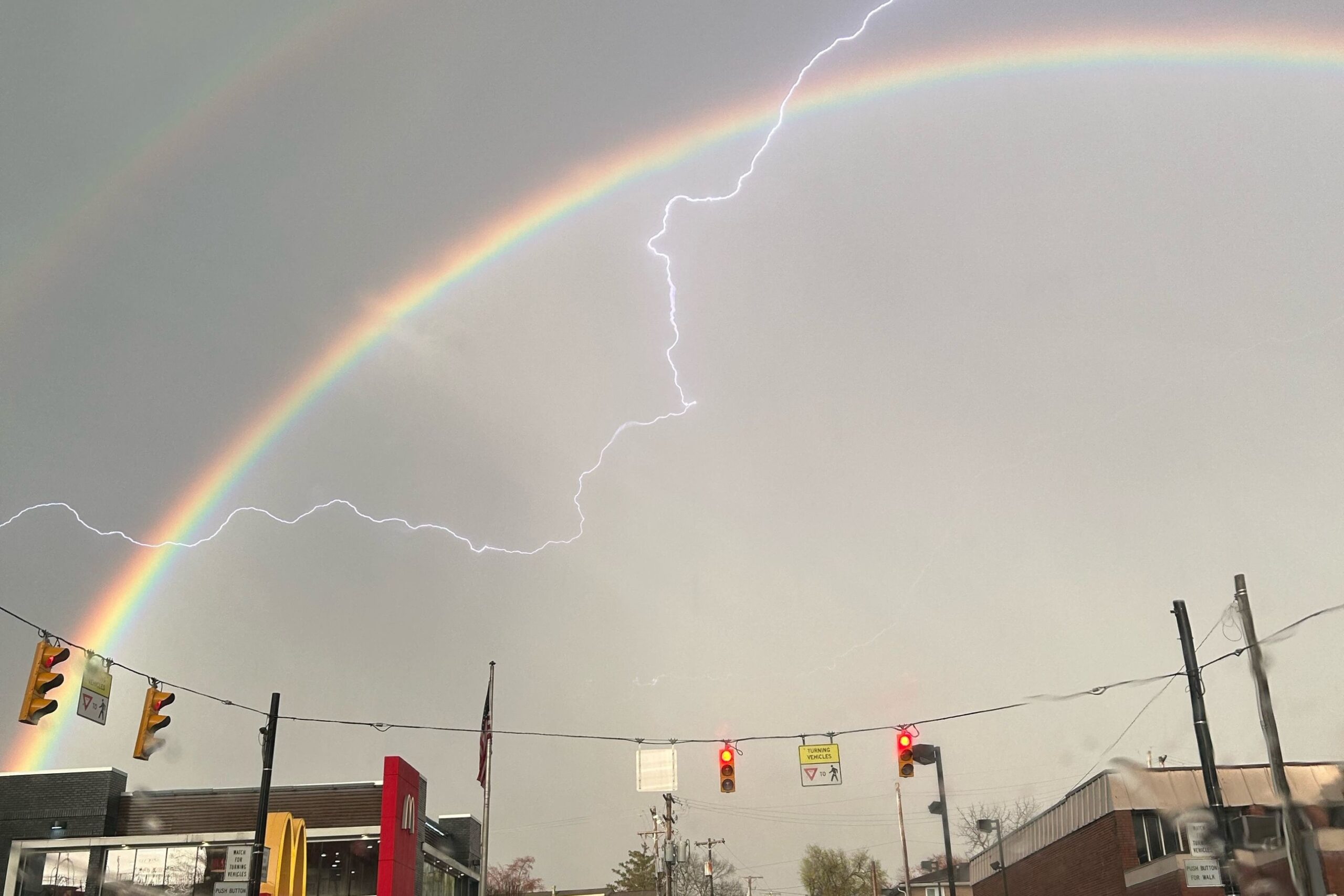A rare scene of a double rainbow and lightning occurring simultaneously in a very “lucky” moment was captured in Ohio.
The image was taken at the edge of campus at Ohio State University in Columbus, the state capital, by John Winbigler, a 21-year-old biology student at the school. He was riding in his friend’s car when he took the photo, he told Newsweek.
The picture was shared in a viral post on Reddit by u/PullingJoy on April 3 and has garnered 46,000 upvotes so far. A caption shared with the post reads: “Once in a lifetime shot by my sister in laws brother.”
Winbigler, who is from Louisville, Kentucky, recalled: “A large thunderstorm was passing through and it started to clear around sunset. The sun began to peek through the clouds, and a double rainbow formed. I was taking a photo of it when lightning struck right when I took the photo and disappeared in less than a second.”
Winbigler noted it was also a “lucky” moment because he “took a few photos of the double rainbow a minute before, but I decided to take another one because they didn’t come out as I would have liked them to.”
“I’ve actually not done a lot of photography before but capturing this photo was an amazing experience and makes me want to try it,” he said.

John Winbigler
What Causes Double Rainbows and Lightning?
A rainbow occurs when sunlight, atmospheric conditions, and the viewer’s position are “just right to see it,” according to SciJinks, a website of the U.S. National Oceanic and Atmospheric Administration (NOAA).
Rainbows require water droplets to be floating in the air, which is why they can be seen just after it rains.
“The sun must be behind you and the clouds cleared away from the sun for the rainbow to appear,” says the NOAA website.
“Light enters a water droplet, slowing down and bending as it goes from air to denser water. The light reflects off the inside of the droplet, separating into its component wavelengths or colors. When light exits the droplet, it makes a rainbow.”
Violet, the shortest wavelength of visible light, bends the most, while red, the longest wavelength, bends the least.
A fainter secondary rainbow can sometimes be seen above the primary rainbow, which is caused by a second reflection inside the water droplet.
According to NOAA, this “re-reflected” light leaves the water drop at a different angle, exiting at “50 degrees instead of 42 degrees for the red primary bow.”
“This is why the secondary rainbow appears above the primary rainbow. The secondary rainbow will have the order of the colors reversed, too, with red on the bottom and violet on the top,” the NOAA said.
Lightning is a giant spark of electricity in the atmosphere that can occur between clouds, the air or the ground. It can be seen in various natural events, such as thunderstorms.
Lightning can occur between opposite charges within a thunderstorm cloud (intra-cloud lightning) or between opposite charges in the cloud and on the ground (cloud-to-ground lightning).
How lightning is formed is a “complicated process,” the NOAA says, explaining that “we generally know what conditions are needed to produce lightning, but there is still debate about exactly how a cloud builds up electrical charges, and how lightning forms.”
Scientists believe that the initial process for creating charge regions in thunderstorms involves small hail particles known as graupel. “When these graupel particles collide and bounce off of smaller ice particles, the graupel gains one sign of charge and the smaller ice particle gains the other sign of charge,” the national body notes.
Do you have a travel-related video or story to share? Let us know via li**@******ek.com and your story could be featured on Newsweek.
Uncommon Knowledge
Newsweek is committed to challenging conventional wisdom and finding connections in the search for common ground.
Newsweek is committed to challenging conventional wisdom and finding connections in the search for common ground.




